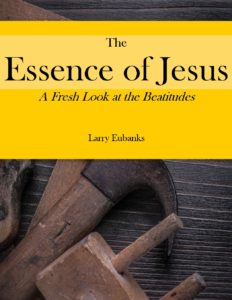
The Human Costs of Tabernacle and Temple, Part 1
 Exodus is a pretty good book, especially at the beginning and the end. There’s a baby hidden in the Nile, the burning bush, Moses trading tricks with Pharaoh’s sorcerers, the plagues, the Red Sea crossing, manna, and all sorts of other really good stuff.
Exodus is a pretty good book, especially at the beginning and the end. There’s a baby hidden in the Nile, the burning bush, Moses trading tricks with Pharaoh’s sorcerers, the plagues, the Red Sea crossing, manna, and all sorts of other really good stuff.
Then you get to chapter 20 and things slow down a bit. God gives Moses the Ten Commandments; that’s significant, obviously. After that, however, you are into stuff about one person’s ox goring another person’s slave and what to do when someone steals another person’s donkey, and before you know it you have entered THE COVENANT CODE!
See, even using all caps can’t make it seem exciting. It just isn’t. And then, just when you thought it couldn’t get any more tedious, beginning in chapter 25 you get instructions for the building of the tabernacle. Detailed instructions. Three chapters’ worth of instructions.
Really? They could have just written, “And then God gave Moses detailed instructions for the building of the tabernacle” and we’d have all been good, but no, they had to include the instructions themselves.
Seriously, who reads users manuals anyway?
You’ve heard someone joke, “I asked this guy for the time and he told me how to build a watch”; must have been the same guy. Someone asked him, “What’s a tabernacle?” and three chapters later we’re ready to bang our heads against the wall.
So what gives?
Flash forward a few hundred years. Solomon is king of Israel, and he decides enter into a massive building project in Jerusalem, beginning with a temple but also including a palace complex. That it was a complex is an indication that it was a larger and more involved construction project than was the temple, taking thirteen years as opposed to seven for the temple. It included a palace for himself, various government buildings surrounding the palace, and one other building: a palace for Pharaoh’s daughter, whom he had married in an alliance with Egypt.
To supply labor for the temple and other building projects, he used forced labor from the northern Israelite tribes. Think about this: he forced Israelites to work for him building a palace for Pharaoh’s daughter.
But that’s not all. Because Solomon did not have the knowledge or technology for such a vast project, nor did he have the materials and skilled labor necessary, he entered into an alliance with king Hiram of Lebanon. The temple was designed by Phoenicians and followed a Canaanite theme, including some Canaanite religious themes. And he paid Hiram’s workers.
He forced Israelites from the northern tribes (excluding Judah) to labor for free, while using heavy taxes from these same northern tribes to pay pagan workers.
Do you see the problem?
I’m sure God was happy to have a nice temple built for him, but not at this cost. Not at the cost of exploiting the regular person, the Israelite working out in the field. Not at the cost of introducing foreign idols and pagan worship practices. Not at the cost of concentrating great amounts of wealth in the hands of just a few people at the top.
If that’s the cost of a temple, well, a tabernacle is just fine, thank you. It’s a nice tabernacle—it’s got acacia wood, fine linen, some silver, and lots of pure gold. So it’s not just some old tent slapped up for God. It’s really nice.
But no one has to become a slave to build it. And no one has to become poor in order to provide the funds to build it. And no religious compromises have to be made to build it.
The tabernacle is a dwelling place for God built on justice, just the way he likes it.
For further thoughts see Part 2.
Illustration by © Can Stock Photo Inc. / Barbulat
 I am a lifelong student of the Bible, and have been a pastor for over twenty-five years. My desire through this blog is to help people see things in the intersection of Scripture and real life that they might have missed. The careless handling of the Bible is causing a lot of problems in our churches and our culture--and is literally turning people away from the church, and, sometimes, God. I hope to treat Scripture with the respect it deserves, and, even if you don't agree with what I say, give you some insight.
Feel free to leave a comment. I promise to respond to you. All I ask is that you be respectful in your comments.
I am a lifelong student of the Bible, and have been a pastor for over twenty-five years. My desire through this blog is to help people see things in the intersection of Scripture and real life that they might have missed. The careless handling of the Bible is causing a lot of problems in our churches and our culture--and is literally turning people away from the church, and, sometimes, God. I hope to treat Scripture with the respect it deserves, and, even if you don't agree with what I say, give you some insight.
Feel free to leave a comment. I promise to respond to you. All I ask is that you be respectful in your comments. 
Connect with Me